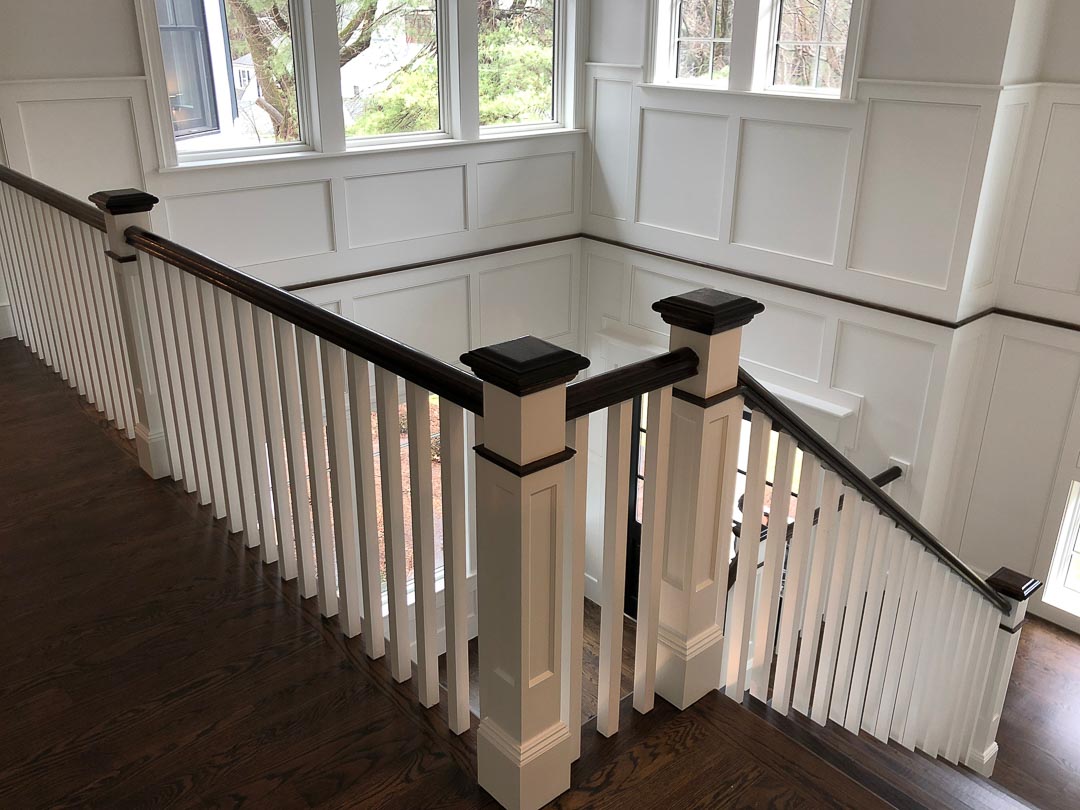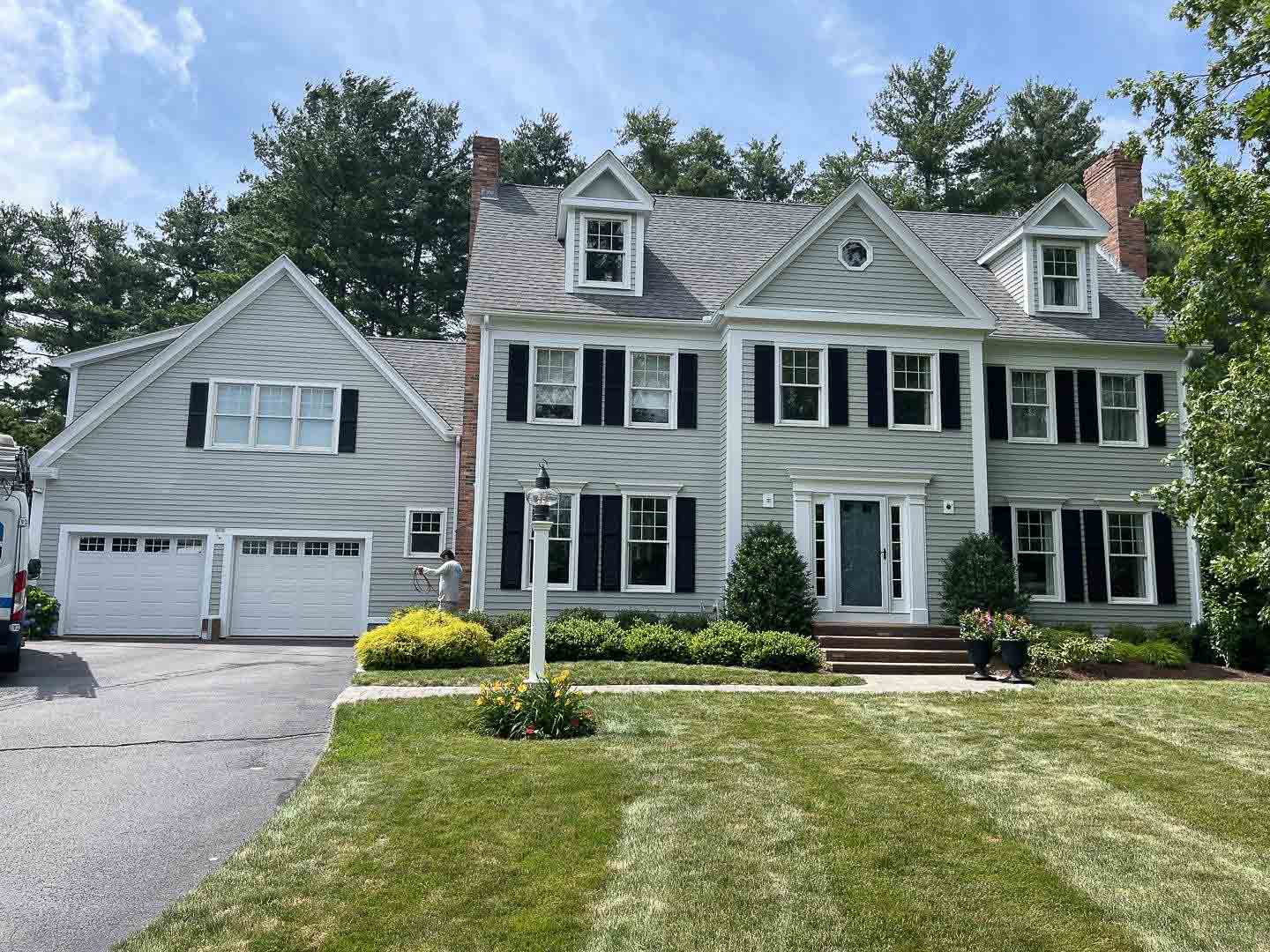Epoxy Floors Amesbury MA
Looking for help with Epoxy Floors Amesbury MA?
Are you a Homeowner? Business Owner? Property Manager? Or maybe someone just looking for more information on Epoxy Floors Amesbury MA?
You’re in the right place…
DO YOU HAVE THESE PROBLEMS:
- Poor surface preparation
- Paint not adhering properly
- Paint cracking or chipping easily
- Incorrect color choice
- Poor paint finish
- Streaks or lap marks in the paint
- Poor coverage on difficult to paint surfaces
- Paint bubbling or blistering
- Paint peeling
- Stains showing through the paint
- Insufficient drying time
Are you looking for a high quality, durable coating solution for your concrete floors? Are you ready to transform it into a stylish and protective space that is both comfortable and easy to maintain? Investing in professional epoxy floor installation services can help you achieve just that. Our reliable services provide homeowners and business owners the perfect solution to safeguard the longevity of their floors while still enjoying its decorative effects.
Benefits Of Pro
Epoxy Floors Installation:
- Durability
- Color Variety
- Easy to Clean
- Chemical Resistance
- Slip-Resistant
- Increase Property Value
Why Choose
Idea Painting Company for Epoxy Floor Installers in Amesbury MA and the Surrounding Towns?
Because we have a reputation for quality work at a fair price. Our customer service is second to none. Our team is always responsive, courteous, friendly, and respectful.
Idea Painting Company Epoxy Floor Installers have helped thousands of Homeowners, Business Owners, Property Managers and other individuals in Amesbury, and the surrounding communities. After some research, we’re confident you’ll find us to be the right Painting Contractor to handle your painting projects.
With Idea Painting Company, you’ll receive:
- Quality workmanship that is guaranteed to last
- Work from professionals who are honest and hardworking
- Dependable service that is completed on time and on budget
- Financing options to help fund your concrete coating project
- Free estimates and a fully insured crew

Durability
Invest in Professional Epoxy Coating for Long-Lasting Protection of Your Garage Floor
Investing in professional epoxy coating for your garage floor is an excellent way to protect your space and add value to your home. Epoxy floor installers are experienced professionals who know exactly how to apply the coating correctly, giving you a long-lasting protection that will stand up to years of wear and tear. With epoxy, you can choose from a variety of colors and textures that match any decor, making it suitable for use in any room of the house. Additionally, epoxy creates a seamless surface that resists staining, cracking and chipping, which means less maintenance down the road.
When it comes time to select an installer for your epoxy flooring project, be sure to look for one with plenty of experience and references from previous customers. Ask about their methods for preparing the surface before application as well as how they plan on cleaning up afterwards.
Color Variety
Transform Your Garage with Professional Epoxy Coating and Endless Color Options
Give your garage a makeover with the help of professional epoxy coating and endless color options. Epoxy floor installers will have you covered, whether you’re looking to add some entertainment flair, or just give the space a more clean and organized look. With epoxy floor installers, you’ll be able to choose from numerous different colors, patterns and textures that are sure to make your interior space stand out. Not only will it enhance the aesthetic value of the space but it is also much easier to clean and maintain than traditional materials like concrete. Not only does epoxy come in an array of colors but it also provides many benefits such as slip resistant surfaces, protecting the floor from wear-and-tear due to heavy traffic or spills; all while being more economical than other materials.
Residential & Commercial
Full Service Painting Company
Kitchen Cabinet Painting
Amesbury MA
Interior Painter
Amesbury MA
Exterior Painter
Amesbury MA
Amesbury Painting Company
Easy to Clean
Low-Maintenance Garage Floor Solution By Professional Epoxy Floor Installers
Finding a low-maintenance garage floor solution is an important task for any homeowner. Professional epoxy floor installers are the experts in providing such solutions and can ensure long-term durability and performance. With epoxy and other materials, these professionals can create a beautiful new surface on any existing garage floor that will be easy to clean and maintain for years to come.
Epoxy floor installers are experienced in this type of installation, ensuring each step of the process is completed correctly with attention to detail. This typically involves preparing the existing surface, mixing the epoxy material, applying it evenly, allowing it to cure properly, and adding a finish coat when necessary. The result is an attractive, glossy appearance that will withstand extreme temperatures as well as spills from automotive fluids or chemicals from lawn care equipment.
Chemical Resistance
Keep Your Garage Floor Safe and Clean with Professional Epoxy Coatings Resistant to Oil, Grease and Chemicals
For those with a garage, ensuring the floor is safe and clean for family members is of utmost importance. Professional epoxy coatings provide durability, safety, and protection from dirt, oil, grease and harsh chemicals. Epoxy floor installers can help you choose the right coating to meet your needs while providing an attractive aesthetic.
Epoxy flooring has several advantages over traditional concrete floors in garages. First and foremost it is resistant to spills and leaks from both oil and water-based liquids due to its chemical composition which helps keep the area safe for kids or pets who might come into contact with it. In addition to its resistance to spills, epoxy flooring also provides enhanced traction due to its non-slip surface which makes it much safer than standard concrete floors when wet or icy conditions are present.
Elias De Lana
Talk To The Owner
We understand that sometimes you just want to talk before scheduling an estimate.
We’ll gladly help with any questions or concerns.
(855) 544-4335
Slip-Resistant
Keep Your Garage Safe With Slip-Resistant Epoxy Floor Coatings
Garages are an integral part of homes, and it’s important to keep them safe for everyone who uses them. Slip resistant epoxy floor coatings can help protect against the dangers that come with walking on a slippery floor surface. Epoxy floor installers provide a professional service to ensure your floors are installed correctly and kept in top condition.
A slip-resistant epoxy floor coating requires no special maintenance and will last for many years with proper care. The coating is applied in multiple layers and offers excellent traction, which reduces the risk of slipping or falling due to wet conditions or debris on the garage floor. It also increases safety by providing a level of cushioning that absorbs the impact of dropped items or falls onto the hard concrete surface.
Increase Property Value
Enhance the Value of Your Home with an Attractive Epoxy Floor for Your Garage, Pool Deck, Basement, And More
Enhancing the value of one’s home is an important part of successful living. One way to easily increase the marketability and overall enjoyment of a home is through enhancing the aesthetic appeal and functionality of its garage. An attractive epoxy coating for the garage floor can be a great installation option due to its durability and non-slip finish. By choosing epoxy floor installers, like Idea Painting Company, homeowners can enjoy better protection against oil, gas, and other chemical spills while adding a modern look to their property.
Epoxy offers excellent adhesion power that ensures it will never peel or chip away over time. Additionally, this type of flooring consists of multiple layers that provide further protection from wear and tear associated with daily use in an automotive or storage space.
PAINTER & FLOORING CONTRACTOR
Focused on Exceeding Expectations
Because we pay such attention to detail throughout each project, our painters can still finish on time. But just to ensure that every customer becomes a loyal customer, we don't get paid until the job is all done and you're completely satisfied with our work.
MAP OF Amesbury, MA
[geocentric_mapembed id=”4a862d54-b5c6-4803-802e-8b6f971e5137″]
Amesbury OVERVIEW
|
Amesbury, Massachusetts
|
|
|---|---|
|
City
|
|

Amesbury City Hall
|
|

Seal
|
|
| Nickname:
Carriagetown
|
|

Location in Essex County and the state of Massachusetts
|
|

Amesbury, Massachusetts
Location in the United States
|
|
| Coordinates: 42°51′30″N 70°55′50″W / 42.85833°N 70.93056°WCoordinates: 42°51′30″N 70°55′50″W / 42.85833°N 70.93056°W | |
| Country | |
| State | |
| County | Essex |
| Settled | 1642 |
| Incorporated (town) | 1668 |
| Incorporated (city) | 1996 |
| Government | |
| • Type | Mayor-council city |
| • Mayor | Kassandra Gove |
| Area | |
| • Total | 13.73 sq mi (35.57 km2) |
| • Land | 12.29 sq mi (31.84 km) |
| • Water | 1.44 sq mi (3.73 km2) |
| Elevation | 50 ft (15 m) |
| Population
(2020)
|
|
| • Total | 17,366 |
| • Density | 1,412.79/sq mi (545.48/km) |
| Time zone | UTC−5 (Eastern) |
| • Summer (DST) | UTC−4 (Eastern) |
| ZIP code |
01913
|
| Area code | 351 / 978 |
| FIPS code | 25-01260, 25-01185 |
| GNIS feature ID | 0618292 |
| Website | City of Amesbury Official Web Site |
Amesbury is a city in Essex County, Massachusetts, United States, located on the left bank of the Merrimack River near its mouth, upstream from Salisbury and across the river from Newburyport and West Newbury. The population was 17,366 at the 2020 United States Census. A former farming and mill town, Amesbury is today largely residential. It is one of the two northernmost towns in Massachusetts (the other being neighboring Salisbury).
History
Settlement period
In 1637, the first English settler in the Salisbury-Amesbury region, John Bayly, crossed the Merrimack River from the new settlement at Newbury, built a log cabin, and began to clear the land for cultivation. He intended to send for his wife and children in England, but they never joined him. He and his hired man, William Schooler, were arrested for a murder Schooler had committed. Schooler was hanged for the murder but Bayly was acquitted. Given the fishing rights on the river by the subsequent settlement, provided he would sell only to it, he abandoned agriculture for fishing.
On September 6, 1638, the General Court of Massachusetts created a plantation on behalf of several petitioners from Newbury, on the left bank of the Merrimack, as far north as Hampton, to be called Merrimac. They were given permission to associate together as a township. The area remained in possession of the tribes along the Merrimack, who hunted and fished there.
The settlers of the plantation, who entered Massachusetts Bay Colony, were rebels in a cause that was settled by the English Civil War (1642–1651). Although nominally subjects of the crown, they did not obey it. The settlers maintained close ties with the Parliamentary cause in Britain. The supreme government of the colony was the General Court, which functioned autonomously, passing its own laws, establishing courts, incorporating townships and providing for the overall defense of the colony. They established a Puritan church rather than the Church of England.
In the early spring of 1639, approximately 60 planters took up residence on land cleared by the natives. In May, an elected planning committee laid out the green, the initial streets, the burial ground, and the first division into lots, apportioning the size of a lot to the wealth of the settler. In November, the General Court appointed a government of six, which required that every lot owner take up residence on his lot. They began to assign lots west of the Pow-wow river. The town was originally named Colchester, but was renamed Salisbury in October 1640, potentially at the suggestion of Christopher Batt, from Salisbury, England. Batt trained the militia in the town. The incorporation of the town granted it legal recognition by the colony to a township of that name, with its own government, empowered by citizens populating a territory of legally defined boundaries. The original Salisbury was many times larger than the present. From it several townships were later separated.
On January 12, 1641, a town meeting ordered the first roads north and west of the Pow-wow River to be built. On April 21, another meeting granted William Osgood 50 acres of “upland” and 10 of “meadow” along the Pow-wow River, provided he build a sawmill for the town to use. It utilized a water wheel driven by the Pow-wow River. The mill produced lumber for local use and pipe-staves for export. A gristmill was added to the Pow-wow river location in 1642. The Powwow River provided water power for a subsequent mill complex. In 1642, the town wanted families to take up residence west of the Pow-wow and form a “New Town.” No volunteers responded.
In 1643, the General Court divided Massachusetts Bay Colony into four counties: Essex, Norfolk, Middlesex and Suffolk. Norfolk contained Salisbury, Hampton, Haverhill, Exeter, Dover, and Strawberry Bank (Portsmouth). This division was a legal convenience based on the distribution of courts. Since the first establishment of four courts on March 3, 1635, the General Court had found it necessary to multiply and distribute courts, so that the magistrates would not spend time in travel that they needed for settling case loads. The main requirement for membership in a shire was incorporation.
Private occupation of the west bank of the Pow-wow River went on as East Salisbury citizens sold their property and moved to New Town. However, New Town remained a paper construct without enforcement. On January 14, 1654, articles of agreement adopted at town meeting divided Salisbury into Old Town and New Town, each to conduct its own affairs. The border was the Pow-wow. The agreement went into effect on January 19, 1655. In New Town, a new government was voted in, which claimed authority over “all matters of publicke concernment.” They still paid taxes to Old Town and expected services from it. The board of Old Town contained some members from New Town for fair representation. This agreement also was known as a “settlement”.
On May 26, 1658, New Town petitioned the General Court for independent town status, but the Old Town denied the petition. The Old Town required all inhabitants, including those in the New Town, to attend church in Old Town and fined settlers for each missed meeting The church and preacher were maintained from taxes. Minister Joseph Peasley of New Town and his congregation attempting to defy the General Court were summoned into District Court at Ipswich “to answer for their disobedience”, were fined there and Peasly was enjoined from preaching. Another petition for separation was denied in 1660.
The burden of attending church several miles away became so great that New Town built a new meeting house and requested the General Court to find a preacher. The court yielded to the petition of 1666, granting the “liberty of a township” to New Town. The town was unofficially incorporated, meaning a government was constituted and officers elected, on June 15. It was named New Salisbury, but in 1667 the name was changed to Amesbury on the analogy of Amesbury, England, which was next to Salisbury, England. Amesbury was officially granted incorporation under that name on April 29, 1668.
After King Phillips War (1675–1678), an effort by the natives to rid themselves of the colonists, the Royal Province of New Hampshire was created and took away several towns in northern Norfolk shire. Massachusetts was reduced in size from most of New England to roughly its current borders. The Court dissolved Norfolk Shire, transferring Salisbury and Amesbury to Essex County.
In 1876, Merrimac was created out of West Amesbury. In 1886, West Salisbury was annexed to Amesbury, unifying the mill areas on both banks of the Pow-wow River.
Post-settlement
Beginning as a modest farming community, it developed a maritime and industrial economy. Shipbuilding, shipping and fishing were also important. The ferry across the Merrimack River to Newburyport was a business until the construction of bridges to cross the river. Newton, New Hampshire, was set off from Amesbury in 1741, when the border between the two colonies was adjusted.
In the 19th century, textile mills were built at the falls, as was a nail-making factory. Beginning around 1800, Amesbury began building carriages, a trade which evolved into the manufacture of automobile bodies. Prominent manufacturers included Walker Body Company, Briggs Carriage Company, and Biddle and Smart. The industry ended with the Great Depression. The Merrimac Hat Company was founded in 1856 and became one of the top hat producers in the nation. Amesbury also produced Hoyt’s Buffalo Brand Peanut Butter Kisses.
In 1876, the town of Merrimac was set off from Amesbury.
Newspapers in the 19th century included the Amesbury Daily News, Merrimac Journal, Morning Courier, Evening Courier, New England Chronicle, Transcript, and the Villager. Newspapers in the 20th century included the Amesbury Advocate, Amesbury News, Amesbury Times, and Leader.
Twentieth century and beyond
In 1996, the town changed its status to a city, and adopted the mayor and municipal council form of government, although it retained the title “Town of Amesbury”, as voters “thought Amesbury was too small and quaint to be a city”. Voters approved a charter amendment in November 2011 changing the city’s official name to the “City of Amesbury” and removing references to the old “Town of Amesbury” name. The city’s seal still bears the name “Town of Amesbury”, although the City put forth a bill in 2013 to correct the seal with the new name.
The community has several buildings that feature early architecture, particularly in the Federal and Victorian styles. The “Doughboy”, a memorial sculpture by Leonard Craske, stands on the front lawn of the Amesbury Middle School. It was dedicated November 11, 1929. Craske is best known as sculptor for the “Fishermens’ Memorial” in Gloucester. There is also a monument erected to Josiah Bartlett, the first signer of the Declaration of Independence, who was born in Amesbury.
-

Thomas Macy House c. 1905
-

Mills in 1914
-

Statue of Josiah Bartlett, signer of the Declaration of Independence, c. 1910
-

Whittier’s home in 1909
Geography
Amesbury is located at 42°51′29″N 70°55′50″W / 42.85806°N 70.93056°W. According to the United States Census Bureau, the city has a total area of 13.7 square miles (35.5 km2), of which 12.3 square miles (31.8 km) is land and 1.5 square miles (3.8 km2), or 10.65%, is water. Amesbury is drained by the Powwow River. Powwow Hill, elevation 331 feet (101 m), is the highest point in town. Once the site of Indian gatherings, or “powwows”, it has views to Maine and Cape Ann. Amesbury is the second northernmost town in Massachusetts, its northernmost point coming just south of the northernmost point of the state, in Salisbury. Amesbury lies along the northern banks of the Merrimack River and is bordered by Salisbury to the east, Newburyport to the southeast, West Newbury to the southwest, Merrimac to the west, and South Hampton, New Hampshire, to the north.
The Powwow River bisects the town, joined by the Back River near the town center. The river flows through Lake Gardner and Tuxbury Pond, which are two of several inland bodies of water in town, including Lake Attitash (which is partially in Merrimac), Meadowbrook Pond, and Pattens Pond. Several brooks also flow through the town. Amesbury has a town forest, which is connected to Woodsom Farm, as well as Powwow Conservation Area, Victoria Batchelder Park and Amesbury Golf & Country Club.
Transportation
Amesbury is served by two interstate highways. Interstate 495 runs from west to east through town, ending at Interstate 95 just over the Salisbury town line. It has two exits in town, Exit 54 at Massachusetts Route 150 (which lies entirely within Amesbury, and leads to New Hampshire Route 150) and Exit 55 at Massachusetts Route 110, which also provides the town’s only direct access to Interstate 95 at Exit 58. I-95 crosses the southeast corner of town, entering along the John Greenleaf Whittier Memorial Bridge, a steel through-truss bridge crossing the Merrimack River. The Whittier Memorial Bridge lies just west of the town’s only other bridges across the Merrimack, the Derek S. Hines Memorial Bridge, which connects Amesbury to Deer Island (which is still part of Amesbury), and the Chain Bridge, the only suspension bridge in Massachusetts, which spans from Deer Island to Newburyport. The current version was built in 1909, but was predated by the 1810 suspension bridge, one of the oldest suspension bridges in the country. The Chain Bridge and its counterparts over the years have been the main entryways into town across the Merrimack, and until the building of the Newburyport Turnpike Bridge, it was the easternmost bridge on the Merrimack River.
MVRTA provides bus service in Amesbury. Route 51 connects to the Haverhill train station. Route 54 connects to Newburyport train station.
| Year | Pop. | ±% |
|---|---|---|
| 1840 | 2,471 | — |
| 1850 | 3,143 | +27.2% |
| 1860 | 3,877 | +23.4% |
| 1870 | 5,581 | +44.0% |
| 1880 | 3,355 | −39.9% |
| 1890 | 9,798 | +192.0% |
| 1900 | 9,473 | −3.3% |
| 1910 | 9,894 | +4.4% |
| 1920 | 10,036 | +1.4% |
| 1930 | 11,899 | +18.6% |
| 1940 | 10,862 | −8.7% |
| 1950 | 10,851 | −0.1% |
| 1960 | 10,787 | −0.6% |
| 1970 | 11,388 | +5.6% |
| 1980 | 13,971 | +22.7% |
| 1990 | 14,997 | +7.3% |
| 2000 | 16,450 | +9.7% |
| 2010 | 16,283 | −1.0% |
| 2020 | 17,366 | +6.7% |
| * population estimate. Source: United States census records and Population Estimates Program data. Source: U.S. Decennial Census
|
||
Government
Amesbury is part of the Massachusetts Senate’s 1st Essex district.
Demographics
As of the census of 2000, there were 16,450 people, 6,380 households, and 4,229 families residing in the city. The population density was 1,326.3 inhabitants per square mile (512.1/km2). There were 6,623 housing units at an average density of 206.2 persons/km (534.0 persons/sq mi). The racial makeup of the city was 97.2% White, 0.6% African American, 0.22% Native American, 0.9% of the population were Hispanic or Latino of any race.
There were 6,380 households, out of which 34.5% had children under the age of 18 living with them, 51.2% were married couples living together, 11.3% have a woman whose husband does not live with her, and 33.7% were non-families. 26.8% of all households were made up of individuals, and 8.9% had someone living alone who was 65 years of age or older. The average household size was 2.52 and the average family size was 3.09.
In the city, the population was spread out, with 26.1% under the age of 18, 6.1% from 18 to 24, 33.8% from 25 to 44, 22.0% from 45 to 64, and 12.0% who were 65 years of age or older. The median age was 37 years. For every 100 females, there were 93.1 males. For every 100 females age 18 and over, there were 89.7 males.
The median income for a household in the city was $34,906, and the median income for a family was $62,875. Males had a median income of $25,489 versus $31,968 for females. The per capita income for the city was $23,103. 5.9% of the population and 3.9% of families were below the poverty line.
Education
The major educational institutions are:
- Amesbury Public Schools
- Amesbury Elementary School (K–5)
- Charles C. Cashman Elementary School (K–5)
- Amesbury Middle School (6–8)
- Amesbury High School (9–12)
- Amesbury Innovation High School (School of Choice)
- Sparhawk School (School of Choice)
Amesbury’s high school football rival is Newburyport; the two teams play against each other every Thanksgiving Day. The Amesbury mascot is “Red Hawks”.
Public library
As of 2012, the Amesbury Public Library pays for access to information resources produced by Brainfuse, Cengage Learning, EBSCO Industries, LearningExpress, Library Ideas, Mango Languages, NewsBank, Online Computer Library Center (OCLC), ProQuest, TumbleBook Library, World Book of Berkshire Hathaway, and World Trade Press.
The Public Library houses an extensive Local History and genealogy collection which is open and available for research.
Points of interest
Notable people
- Jimmy Bannon (1871–1948), outfielder in Major League Baseball
- Josiah Bartlett (1729–1795), signer of the Declaration of Independence, fourth Governor of New Hampshire
- Daniel Blaisdell (1762–1833), congressman from New Hampshire
- Nathaniel Currier (1813–1888), American lithographer, Currier and Ives
- Jeffrey Donovan (born 1968), actor; star of television show Burn Notice
- Mary Baker Eddy (1821–1910), founder of Christian Science
- Robert Frost (1874–1963), poet
- Susannah (North) Martin, victim of Salem witch trials in 1692
- William A. Paine (1844–1929), businessman, co-founded the brokerage firm Paine Webber
- Harriet Prescott Spofford (1835–1921), author
- Paine Wingate (1739–1838), preacher, served in the Continental Congress; US senator and congressman
- Al Capp, cartoonist, author of long running satirical strip Li’l Abner lived in Amesbury for most of his life and is buried in the town.
- John Greenleaf Whittier (1807–1892), poet
International relations
Twin towns – Sister cities
Amesbury is twinned with:
- Esabalu, Kenya (since 1987)
See also
- List of mill towns in Massachusetts
References
Publications
Books and articles
- Arrington, Benjamin F., ed. (1922). Municipal History of Essex County in Massachusetts. Vol. I (Tercentenary ed.). New York: Lewis Historical Publishing Company.
- Merrill, Joseph (1880). History of Amesbury Including the First Seventeen Years of Salisbury to the Separation in 1654 and Merrimac from its Incorporation in 1876. Haverhill: Press of Franklin P. Stiles.
history of amesbury.
- Amesbury Vital Records to 1849. Published 1913. Transcribed and put online by John Slaughter and Jodi Salerno.
- This article incorporates text from a publication now in the public domain: Gilman, D. C.; Peck, H. T.; Colby, F. M., eds. (1905). New International Encyclopedia (1st ed.). New York: Dodd, Mead.
{{cite encyclopedia}}: Missing or empty|title=(help) - Merrill, Joseph, History of Amesbury, from the History of Essex County Volume 2 Chapter 125, pages 1495–1535, compiled by D. Hamilton Hurd, published by J.W. Lewis 1888.
Maps
- Sargeant, Christopher. 1794 Map of Amesbury.
- Clough, Aaron. 1795 Map of Salisbury.
- Nichols, W., J S Morse. 1830 Map of Amesbury.
- Anderson, Philander. 1830 Map of Salisbury.
- Beers, D.G. 1872 Atlas of Essex County, Massachusetts Amesbury. Plate 9. Amesbury and Salisbury Mills. Now Amesbury Center. Plate 12. Salisbury. Plate 15. West Amesbury now Merrimac. And East Salisbury. Plate 17. Salisbury Point. Plate 19. (Now The Point in Amesbury).
- Bigelow, E.H. Amesbury and Salisbury Mills. Bird’s-eye view at the Boston Public Library website.
- Norris, George E. Amesbury. Panoramic View. Published 1890. Burleigh Lith. Est. At the Library of Congress website.
- Hughes & Bailey. Amesbury. Panoramic View. Published 1914.
- Walker, George H. 1884 Atlas of Essex County Massachusetts 1884 Map of Amesbury. Plate 169. Amesbury, Salisbury Point. Plate 74. Merrimac Center (was West Amesbury). Plate 151. Amesbury Village Mills. Plate 170-171. 1884 Map of Merrimac. Plate 172. 1884 Map of Salisbury. Plate 175. Salisbury Village Mills on the Powwow River. Plate. 176-177. East Salisbury. Plate 178. Danvers Catholic Church, Folger’s Carriage Factory Amesbury. Plate 166.
External links
- City of Amesbury
- Explore Amesbury
- Amesbury Chamber of Commerce
- Amesbury Public Library
THINGS TO DO Amesbury
[geocentric_thingstodo id=”4a862d54-b5c6-4803-802e-8b6f971e5137″]
DRIVING DIRECTIONS
[geocentric_drivingdirections id=”4a862d54-b5c6-4803-802e-8b6f971e5137″]
NEIGHBORHOODS
[geocentric_neighborhoods id=”4a862d54-b5c6-4803-802e-8b6f971e5137″]
BUS STOPS
[geocentric_busstops id=”4a862d54-b5c6-4803-802e-8b6f971e5137″]
















